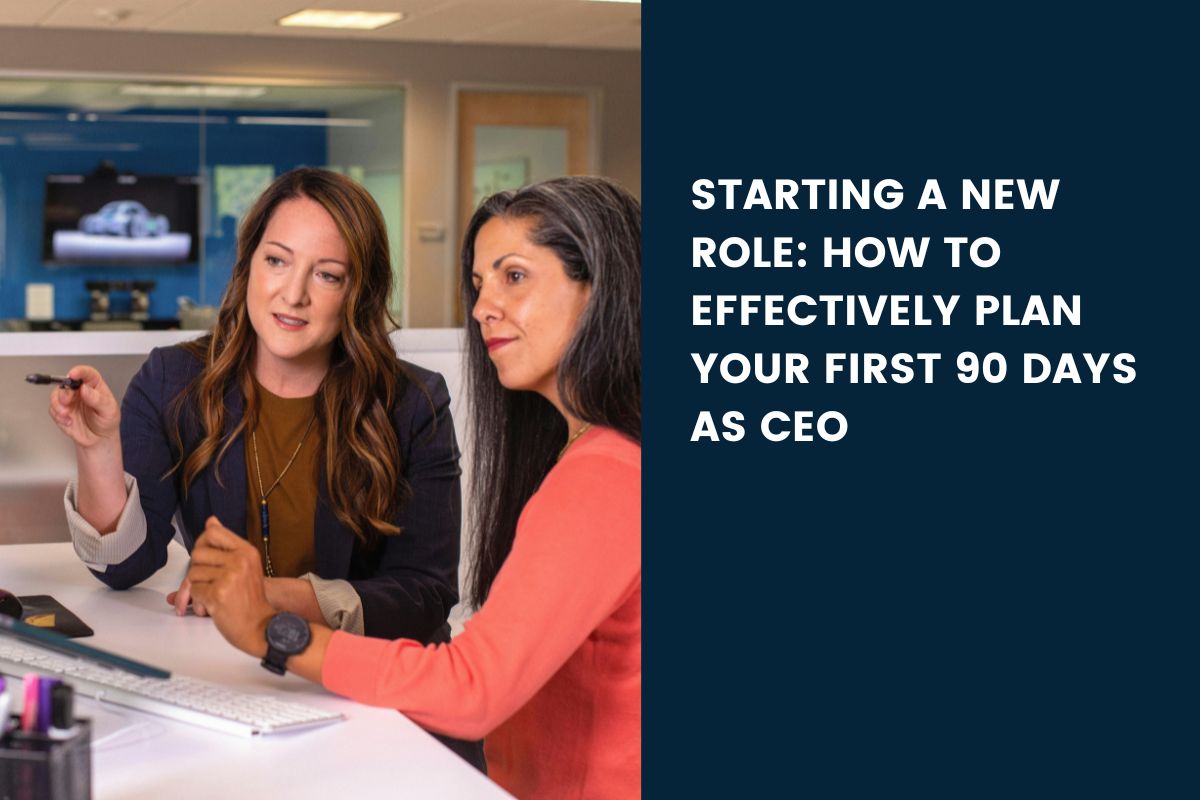90-Day CEO Onboarding Plan: A Roadmap to Success
Day 1–5: Initial Setup & Key Introductions
Objective: Gain a foundational understanding of the organisation, handle essential logistics, and begin building relationships with key personnel.
- Meet the Board: Connect with the Chair and key Board members to clarify expectations, discuss organisational vision, and align on immediate top priorities.
- Setup Logistics: Finalise onboarding essentials like email, software access, HR protocols, and other necessary administrative tasks.
- Initial 1-on-1s with Executive Team: Have brief meetings with each executive team member to understand their roles, key priorities, and any immediate challenges they face.
- Strategy Review: Start reviewing key organisational documents, including recent board reports, financial statements, and strategic plans, to establish a strong baseline.
Week 2–4: Immersing in the Business & Culture
Objective: Develop a comprehensive understanding of the core operations, internal culture, and key stakeholders to inform strategic planning.
- Operational Overview: Attend briefings across all functional areas, including finance, HR, marketing, sales, and product, to gain a broad view of the organisational operations.
- Customer Insights: Participate in customer-focused sessions to understand the customer journey, value proposition, and feedback mechanisms.
- Culture & People: Hold group meetings with diverse employee groups, including frontline and support staff, to gain insights into the workplace culture and team dynamics.
- Department Shadowing: Spend time observing team members in various departments to understand workflows and department interactions.
- HR Collaboration: Partner with HR to discuss talent landscape, DEI initiatives, and employee engagement programs.
- Stakeholder Engagement: Meet with top external stakeholders, such as key clients, suppliers, and industry partners, to build relationships and gain insights into their expectations.
Month 2: Strategic Planning & Team Alignment
Objective: Begin fostering alignment among the executive team around shared goals, strategies, and critical projects.
- Strategic Offsite: Organise an offsite meeting with the executive team to discuss organisational vision, strategic pillars, and key performance metrics.
- Quick-Win Initiatives: Identify any immediate projects or improvements that align with strategic priorities for swift impact.
- Team Workshops: Host cross-functional workshops with direct reports to encourage alignment, establish accountability, and facilitate collaborative teamwork.
- Internal Listening Tour: Conduct “Ask Me Anything” sessions or informal gatherings with employees to open channels for transparent communication and foster trust.
- Employee Feedback Review: Work with HR to analyse data from engagement surveys, pulse checks, and exit interviews to identify key themes and areas for improvement.
Month 3: Operational Deep Dive & 100-Day Review
Objective: Conduct a thorough assessment of the organisation’s operations and present findings and priorities to the Board.
- Functional Deep Dives: Review departmental metrics, budget performance, and ROI on major initiatives to identify successes and areas for improvement.
- Executive Discussions: Meet with each executive team member to discuss functional roadmaps, resource needs, and immediate issues.
- 100-Day Review Presentation: Present findings, initial learnings, and areas of focus in a formal review with the Chair and Board members.
- Strategic Adjustments: Share any short-term adjustments to strategy or operations, and outline alignment with the organisation’s long-term vision.
Key Deliverables by Day 90
- Strategic Action Plan: Present a refined strategic plan outlining 1-year and 3-year goals.
- Executive Team Cadence: Establish a regular meeting schedule for the executive team to track progress on strategic initiatives and foster ongoing communication.
Ongoing: Continuous Engagement & Development
Objective: Create a sustainable rhythm for growth, feedback, and engagement across the organisation.
- Board Check-ins & Reviews: Plan quarterly updates with the Board and conduct annual strategy reviews.
- Employee Listening Sessions: Continue regular feedback sessions with employees to maintain open communication channels.
- Launch New Initiatives: Implement any approved initiatives or adjustments from the 100-day review in collaboration with the executive team.
